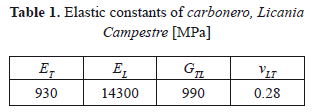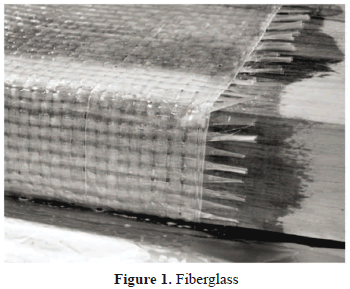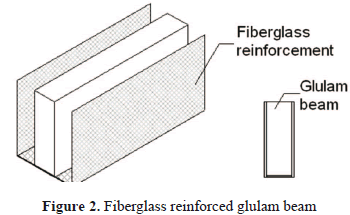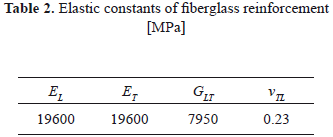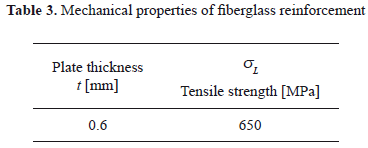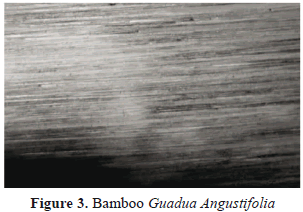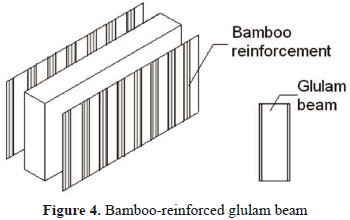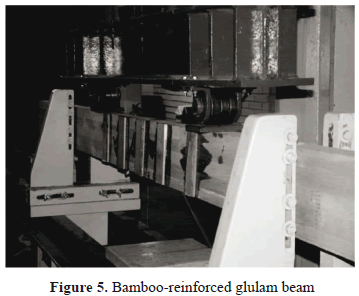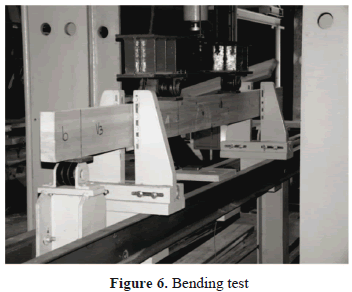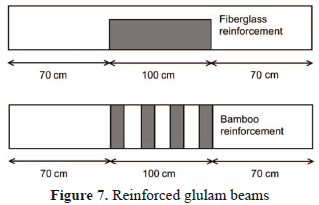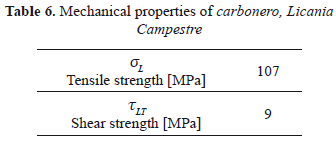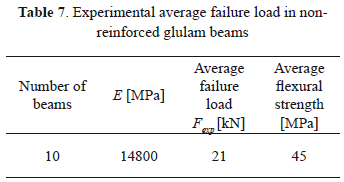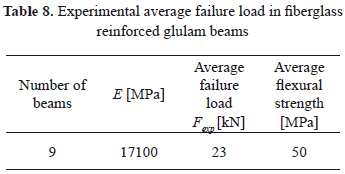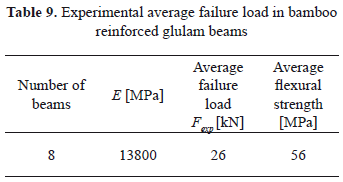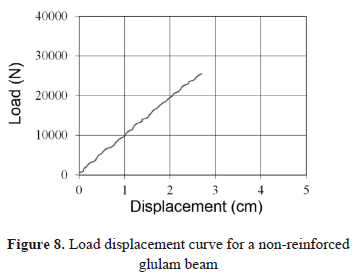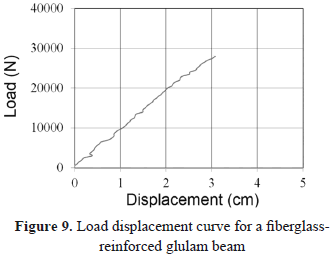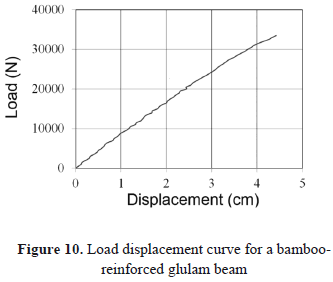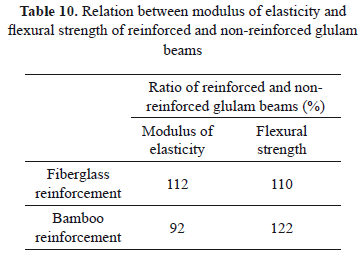Services on Demand
Journal
Article
Indicators
-
 Cited by SciELO
Cited by SciELO -
 Access statistics
Access statistics
Related links
-
 Cited by Google
Cited by Google -
 Similars in
SciELO
Similars in
SciELO -
 Similars in Google
Similars in Google
Share
DYNA
Print version ISSN 0012-7353
Dyna rev.fac.nac.minas vol.79 no.174 Medellín July/Aug. 2012
BAMBOO-REINFORCED GLULAM BEAMS: AN ALTERNATIVE TO FIBERGLASS-REINFORCED GLULAM BEAMS
VIGAS DE MADERA LAMINADA REFORZADAS CON BAMBÚ: UNA ALTERNATIVA A VIGAS DE MADERA LAMINADA REFORZADAS CON FIBRA DE VIDRIO
CÉSAR ECHAVARRÍA
Ph.D. Universidad Nacional de Colombia, caechavarrial@unal.edu.co
LAURA JIMÉNEZ
Estudiante pregrado, Universidad Nacional de Colombia, lljimenezg@unal.edu.co
JUAN CARLOS OCHOA
Ph.D., Universidad Nacional de Colombia, jcochoa@unal.edu.co
Received for review December 2th, 2011, accepted February 28th, 2012, final version March, 6th, 2012
RESUMEN: Se realizó un estudio experimental para investigar el comportamiento mecánico de vigas de madera laminada reforzadas con fibra de vidrio o bambú. El refuerzo se propone con el fin de mejorar la resistencia en flexión y la ductilidad de las vigas de madera laminada.
La viga se refuerza en la zona traccionada y en las caras laterales con los refuerzos de fibra de vidrio o de bambú. Las vigas sin refuerzo y las vigas reforzadas con igual geometría se ensayaron para determinar las características de carga-deformación. El resultado de este trabajo experimental para evaluar y comparar las técnicas de reforzamiento se presenta en este artículo. Los ensayos muestran que la fibra de vidrio y el bambú aumentan la capacidad resistente de la viga de madera laminada. Se encuentra un aumento en la carga de ruptura y en la rigidez de las vigas reforzadas respecto a las vigas no reforzadas.
PALABRAS CLAVE: Madera laminada, Viga, Fibra de vidrio, Bambú, Refuerzo
ABSTRACT: A research study was undertaken to investigate the mechanical performance of glulam beams reinforced by fiberglass fabrics or bamboo. Local reinforcement is proposed in order to improve the flexural strength and ductility of glulam beams. The glulam beam is strengthened in tension and along its sides with the fiberglass or bamboo. A series of fiberglass-reinforced glulam beams and bamboo-reinforced glulam beams were tested to determine their load-deformation characteristics. Experimental work for evaluating the reinforcing technique is reported here. According to experiment results, the fiberglass and bamboo reinforcements led to a higher glulam beam performance. The results show a considerably improved stiffness of the reinforced over the non-reinforced specimens. By using fibreglass and bamboo reinforcements, several improvements in strength and stiffness may be obtained.
KEYWORDS: Glulam, Beam, Fiberglass, Bamboo, Reinforcement
1. INTRODUCTION
Wood is often inappropriate for heavy load construction applications because of its low durability and high variability. In order to add value to lumber, the glued-laminated timber (glulam) technique is a rational option; it is a well-established technique for minimizing the effects of knots, micro fibrils angle, and heterogeneity existing in solid timber beams.
With higher mechanical properties and less variability, glulam has become an interesting alternative to traditional materials (e.g., concrete, steel) for structures in civil engineering. A further step to decrease this variability has been widely investigated during recent decades by bonding carbon and glass fibers (FRPs) to timber or glulam beams [1,5–16]. These fibers are stiff and strong, have low density and are corrosion resistant. It has been shown that it is possible to increase the flexural properties, the shear properties, or both of them simultaneously. However, fibers used as FRP components are difficult to recycle. The properties of some natural fibers (bamboo, cotton, wool, etc.) have been investigated and the reported results showed promising utilisation of some of them as an alternative to FRPs in many applications. Natural fibers are light, renewable, and possess high mechanical properties. These characteristics make them suitable to be used for the strengthening of structural elements made of wood.
This paper shows an experimental study on reinforcing glulam beams made of carbonero (Licania Campestre) with fiberglass and bamboo.
2. REINFORCED GLULAM BEAMS
The lumbers used to produce glued-laminated timber are first graded to determine their strength (visual grading) and stiffness (mechanical grading) so as to optimize the mechanical properties of each component of the glulam and place each member in the optimal place. Lumbers with the highest mechanical properties will be placed in the top and bottom of the glulam, where the bending stresses (both compression and tension) are the greatest.
The initial assembly is achieved when the wood is in a dry state. The glue is then applied and the laminas are stuck together. Pressure is applied during curing to provide a good bonding between the laminas. As a final step, surface planing, patching, and end trimming are achieved to get a smooth surface.
Glulam timbers exhibit the same characteristic as lumber; however, glulam timber has less variability, better mechanical properties, and allows for better control and removal of natural defects present in wood such as knots, shakes, the slope of the grain, etc.
The tension failure of glulam in bending is brittle, random, and difficult to predict. In order to increase glulam beams' load capacity and ductility, fiberglass or bamboo can be used as a superficial covering (reinforcement) on the lateral faces of the glulam beam. The required beam section can be reduced by reinforcing the wood with stiff and strong materials, thereby obtaining an increase in bending stiffness and strength.
Using reinforcement ensures improvements in structural performance. Reinforced glulam beams can be a good option as a substitute for high quality solid timber beams when forest resources are not available to make solid timber elements.
Reinforcement can have major advantages:
- The enhancement of glulam beams' mechanical properties
- The decrease of the cross section and the weight of the glulam beam
- The allowable use of lower wood grades
In this project, all the glulam beams were made of carbonero (Licania Campestre). In Table 1 there is a general description of its mechanical properties.
2.1. Fiberglass
A composite fiber-reinforced polymer (FRP) is used in this study. Fiber-reinforced polymer consists of a polymer matrix that is reinforced with fibers. The fibers are usually fiberglass, carbon, or aramid, while the polymer is usually an epoxy, vinylester, or a polyester thermosetting plastic. Fiber-reinforced polymers are commonly used in the aerospace, automobile, marine, and construction industries.
Figure 1 shows the fiberglass reinforcement.
The reinforcement materials used in this research are OCV™ roving fiberglass bi-directional fabrics woven in 800 gr/m2 (WR800) and the epoxy resin of Sikadur HEX300™. Sikadur HEX300™ is an epoxy system which has high strength, a high modulus of elasticity, and which adheres even in the presence of moisture. For this research, it is used as primer and impregnating resin, and as a bonding agent between the glulam beam and the reinforcement.
These reinforcements are glued laterally on the glulam beam as shown in Fig. 2. The glulam beam is reinforced in tension (bottom of the beam) and on its sides with fiberglass (U-shaped half wrapping).
This reinforcement contributes to improvement in the wood's mechanical behaviour and by giving the wood the necessary strength to avoid brittle failures. In particular, the shear and tensile strength of the reinforced wood increase considerably. The elastic constants and material properties of fiberglass reinforcement are summarized in Tables 2 and 3. These properties are typically provided by the manufacturer of the FRP material product. Nevertheless, independent checks (via theoretical calculations) and tests have been conducted to verify the FRP material properties reported here.
Fiberglass becomes an alternative which is particularly useful for reinforcement in existing structures.
2.2 Bamboo (Guadua Angustifolia)
Recyclability and environmental friendliness are important ecological attributes of timber constructions. Natural fibers, which serve as reinforcement in composite materials, have gained a renewed interest for use as a construction material.
Guadua Angustifolia is the predominant bamboo in Colombia. Bamboo is mainly used in Colombia for household objects and roof systems; it is also employed for flooring and furniture. There are other more industrial-scale uses which are being developed and investigated.
The process for obtaining bamboo in sheets and planks involves cutting stalks into thin strips, making them flat, and finally, boiling and drying the strips. In Colombia, thin flat strips of bamboo are used as reinforcement because this helps eliminate the fissures caused by the excess of perpendicular-to-grain stress, and it also improves the bending behaviour. Thin flat strips of bamboo are used in our research as reinforcement to improve the behaviour of the glulam beam. Figure 3 shows the reinforcement, which is constituted by the bamboo (Guadua Angustifolia) and the epoxy resin of Sikadur HEX300™. The bamboo strip reinforcements are glued laterally on the glulam beam as shown in Figs. 4 and 5.
Elastic constants and material properties are summarized in Tables 4 and 5. Bamboo exhibits interesting specific mechanical properties compared to fiberglass, especially regarding the modulus of elasticity.
In all cases, the application of reinforcement must be carried out with precautions.
The bonding of fiberglass and bamboo reinforcements must be prepared very carefully:
- The wood surface must be flat, clean, and not weathered in order to insure proper adhesion.
- The wood surface must be dry when carrying out the gluing process, in order to optimize the bonding between the wood and the reinforcement (the fiberglass or the bamboo).
3. EXPERIMENTAL VERIFICATION AND DISCUSSION
This paper presents a comparative study: 10 non-reinforced glulam beams made of carbonero (Licania Campestre), 9 fiberglass-reinforced glulam beams, and 8 bamboo-reinforced glulam beams were prepared and tested under four-point bending.
By reinforcing the glulam beams with bamboo or fiberglass, a more homogeneous mechanical behaviour is obtained, since load capacity, ultimate displacement, and ductility are increased. The tensile and shear strength must be enhanced mainly by the judicious use of reinforcement.
Laboratory tests on non-reinforced and reinforced glulam beams were performed.
The cross section of the beams is rectangular with a width of 50 mm and a height of 150 mm. The beam is simply supported with a span of 2.40 m, represented by the geometry shown in Figs. 6 and 7.
The glulam beams were made of carbonero kiln-dry lumber. Prior to gluing, the laminas were conditioned to attain a 12% equilibrium moisture content. Specific gravity based on oven-dry mass and volume at 12% moisture content of the specimens varied from 0.50 to 0.60 as determined per ASTM D2395-02 [3]. For each lamina, wood elastic properties were determined non-destructively using transverse vibration (E-computer) and visual grading criteria. Material shear strength and tensile strength parallel-to-grain were determined using ASTM D143-94 [2] test methods. Tests were conducted on small, clear, straight-grained specimens at 12% moisture content. The material properties of carbonero are summarized in Table 6.
The beams were tested under four-point bending using a universal testing machine in accordance with ASTM D198-08 [4].
The displacement-control rate of loading was applied to achieve failure in 5–15 min and the load-displacement curve was recorded. Tests were stopped when one of the following conditions was reached: when the load dropped with no recovery or when the displacement exceeded 50 mm.
A total of 27 glulam beams were tested in the course of this study. The number of replications and the summary of test results for each configuration are given in Tables 7–9.
The displacement measured at mid-span presented a linear behaviour in all the glulam beams. Besides, a failure in the tension side was mostly registered for the non-reinforced beams. As mentioned previously, glulam beams tested in bending usually failed at the tension side at knots, defects, or finger joints positions.
Glulam is thus mostly reinforced on the tension side in order to enhance the tensile properties, to increase the flexural strength and stiffness, and to make the glulam beam fail in compression mode, which is more ductile.
There is a noticeable increase of load capacity by reinforcing the beams (Tables 8 and 9).
Figures 8–10 are load displacement plots for glulam beams of the same geometry. Both fiberglass and bamboo work well as reinforcements.
The ratio of reinforced and non-reinforced flexural strength using fiberglass as reinforcement is 11%. The increase using bamboo is 22%. Table 10 resumes the comparative results. The mechanical behaviour of reinforced glulam beams will be more homogeneous and the reliability of the whole structure will increase.
3. CONCLUSIONS
There are many advantages for using fiberglass or bamboo reinforcements in glulam beams:
- Increased strength and stiffness.
- Improved structural efficiency and reduced structural member size requirements, weight, and costs under certain conditions.
- Allowing for the upgrading of structures for higher loads or for restoring original strength.
- The improvements on mechanical performance of fiberglass- and bamboo-reinforced glulam beams offer higher stiffness and a higher failure load.
- The load-carrying capacity of fiberglass-reinforced glulam beams and bamboo-reinforced glulam beams are identical.
- Behaviour of reinforced glulam beams is more uniform than unreinforced ones; which leads to further improvement in design properties.
- By placing the reinforcement in the center of the beam, both fiberglass and bamboo are options with great potential for improving the flexural strength and stiffness of glulam beams.
- By reinforcing glulam beams with fiberglass or bamboo under certain conditions, structural member size requirements, weight, and costs can be reduced. Bamboo could be a good alternative for reinforcement because it is less expensive than fiberglass.
4. REFERENCES
[1] Andre, A., Fibers for strengthening of timber structures. Research report, Luleå University of Technology, Division of Structural Engineering, 2006. [ Links ]
[2] AMERICAN SOCIETY FOR TESTING AND MATERIALS (ASTM). Standard methods of testing on small clear specimens of timber. D143-94. ASTM Annual Book of Standards. West Conshohocken, Pa., 2006. [ Links ]
[3] AMERICAN SOCIETY FOR TESTING AND MATERIALS (ASTM). Standard test methods for specific gravity of wood and wood-based materials. D2395-02. ASTM Annual Book of Standards. West Conshohocken, Pa.,2006. [ Links ]
[4] AMERICAN SOCIETY FOR TESTING AND MATERIALS (ASTM). Standard test methods of static tests of lumber in structural sizes. D198-08. ASTM Annual Book of Standards. West Conshohocken, Pa.,2009. [ Links ]
[5] Brunner, M., Schnueriger, M., Timber beams strengthened by attaching prestressed carbon FRP laminates with a gradiented anchoring device. Proceedings of the international symposium on bond behaviour of FRP in structures (BBFS 2005), pp. 465-471, 2005. [ Links ]
[6] Davalos, J.F., Barbero, E. and Munipalle, U., Glued-laminated timber beams reinforced with E-glass/polyester pultruded composites. Proceedings 10th structures congress, ASCE, San Antonio, Texas, pp. 47-50, 1992. [ Links ]
[7] Chen, C.J., Mechanical behavior of fiberglass reinforced timber joints. Ph.D Thesis N° 1940. Swiss Federal Institute of Technology Lausanne EPFL, Switzerland, 1999. [ Links ]
[8] Chen, C.J., Haller, P., Experimental Study on Fiberglass Reinforced Timber Joint. Pacific Timber Engineering Conference. Gold Coast, Australia, 1994. [ Links ]
[9] Echavarría, C., Correa, C. and Echeverri, C., Dowel-type timber joints reinforced with steel nail plates. Dyna, Año 77, 164, pp. 98-108, 2010. [ Links ]
[10] Fiorelli, J. and Dias, A.A., Analysis of the strength and stiffness of timber beams reinforced with carbon fiber and glass fiber. Materials Research; 6(2), pp.193-202, 2003. [ Links ]
[11] Haller, P., Chen, C.J. and Natterer, J., Experimental study of glassfibre reinforced and densified timber joints. Proceedings Timber Engineering Conference. New Orleans, USA, 1996. [ Links ]
[12] Haller, P., Wehsener, J., Use of technical textiles and densified wood for timber joints. Proceedings RILEM Symposium on Timber Engineering. Stockholm, Sweden, 1999. [ Links ]
[13] Martin, Z.A., Stith, J.K. and Tingley, D.A., Commercialisation of FRP reinforced glulam beam technology. Proceedings of the 6th World Conference on Timber Engineering WCTE, Whistler, Canada, 2000. [ Links ]
[14] Patrick, G.R.H., The structural performance of FRP reinforced glued laminated beams made of homegrown Sitka spruce. Ph.D. Thesis, Queen's University, Belfast, Northern Ireland, 2004. [ Links ]
[15] Romani, M., Blaß, H.J., Design model for FRP reinforced glulam beams. Proceedings of the International Council for Research and Innovation in Building and Construction (CIB), Working Commission W18 Timber Structures, Meeting 34, Venice, Italy, 2001. [ Links ]
[16] Rowlands, R.E., Van Dewehge, R.P., Laufenberg, T.L. and Krueger, G.P. Fiber-reinforced wood composites. Wood and fiber science; 18, pp. 39-57, 1986. [ Links ]













